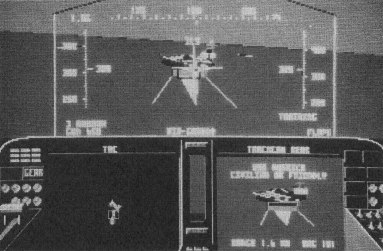The Official F-19 Stealth Fighter Handbook
by Richard Sheffield
Punching Out
Sometimes you have no other choice but to “hit the silk” and bail out. During that first instant when you realize you no longer have control of the aircraft is when you must fight the panic and evaluate the situation. Of course, there are situations that require no evaluation. If you loose control at low altitude and low speed, you had better get out in a hurry! But if you have some time, you may improve your odds by thinking for a second. If you're above 14,000 feet (not a good idea to begin with), ride the aircraft down for a while until you're at a lower altitude.

What happens to your plane after you leave it is also important. Letting this top secret weapons system fall into enemy hands will be bad news even if you're rescued or eventually released. So your best bet is to get your crippled bird as far out to sea as possible—well over deep water. If you ditch here, you have a great chance of being picked up by friendly forces, and the debris of your plane will be gone forever.
Bailing out over friendly territory is the next best thing, though some of the aircraft debris could still fall into the wrong hands.
Bailing out over enemy territory or close to an enemy shore should be avoided if at all possible. Not only will you be captured and put through a humiliating trial, but the enemy will be able to learn a lot from the crash site. Even if you're eventually released, such an incident will definitely throw a wet rag on your career as a military pilot.
Table of Contents
Previous Section: The ILS
Next Section: Chapter 4. Air-to-Ground Tactics
